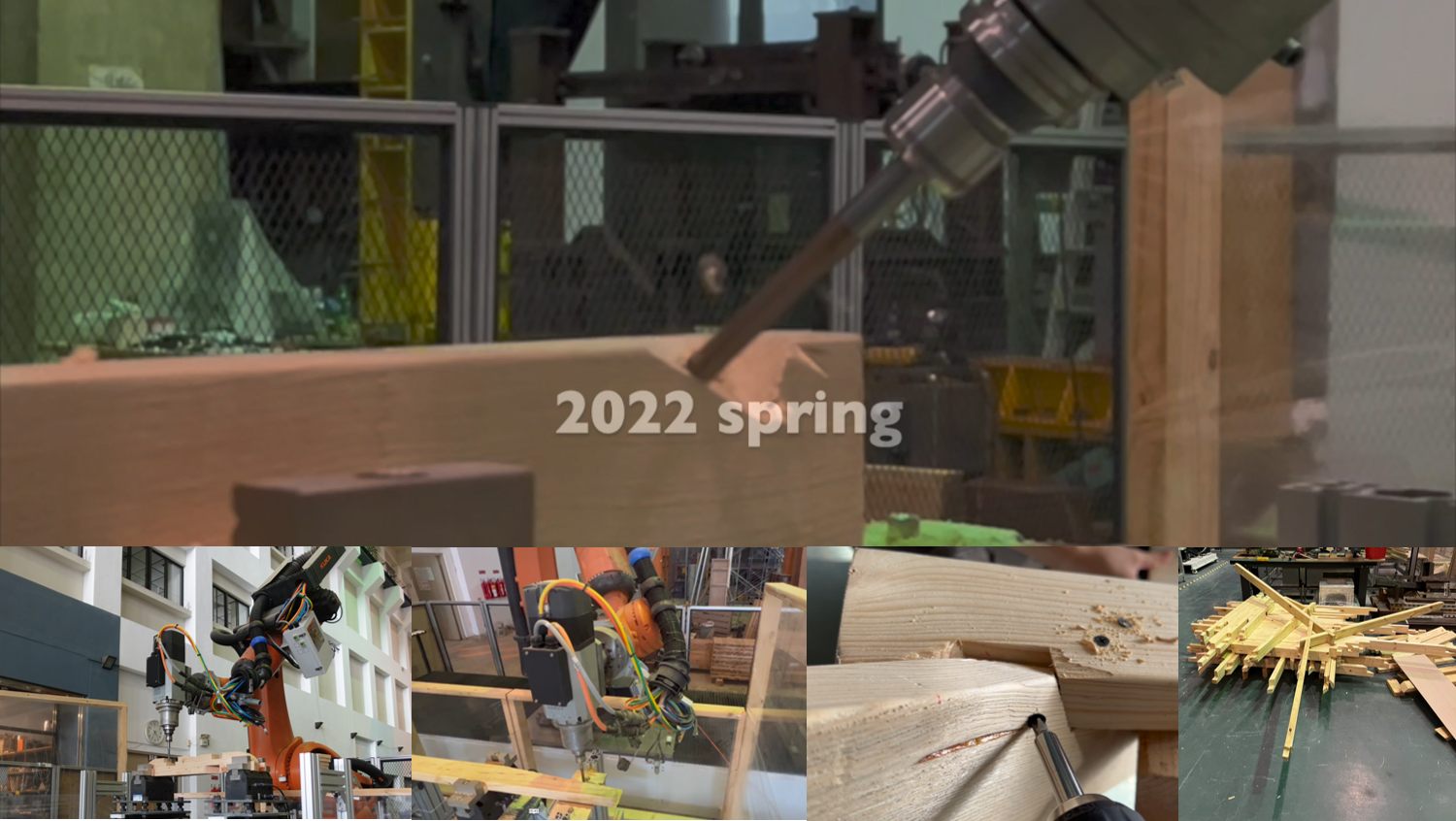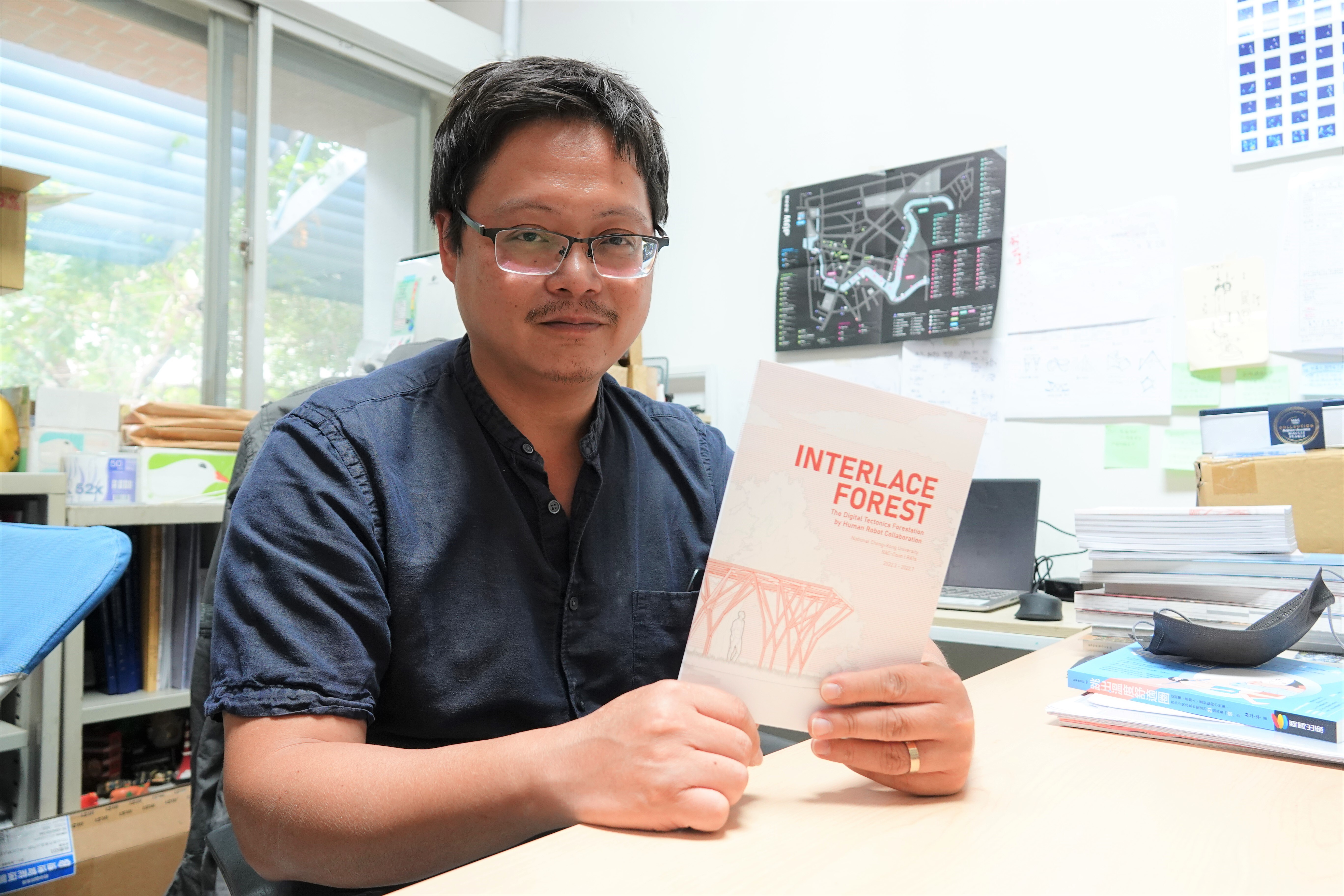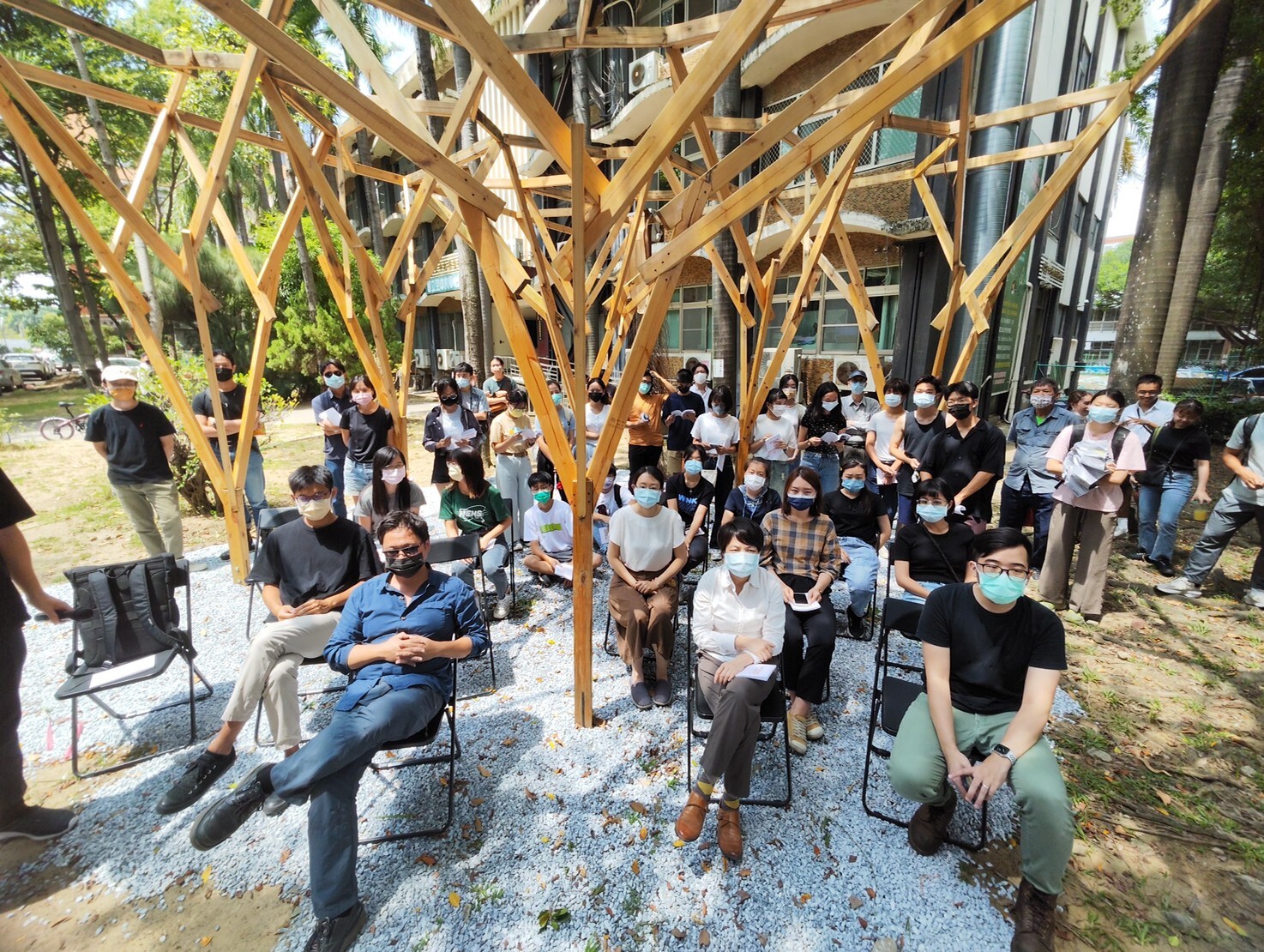Interlace Forest, a Mechanical Arm Constructed Wooden Art, Becomes a Novel Landscape at NCKU
Written by Amy Wu. Image credit to News Center.
Regarding as a mechanical arm cooperation, a new artistic work, “Interlace Forest,” debuted at Banyan Garden of National Cheng Kung University! At the early 2022 academic year, Yang-Ting Shen, the associate professor of Department of Architecture, presented a full-size wooden pavilion which integrated bionic algorithm and dowel wood structure. Portraying the growing trees by vertical wooden sticks, the realistic “forest appearance” and the innovative wood structure of the pavilion got the public attention on its first public appearance.

Since 2021 Wave Eaves, teachers, and students of NCKU Department of Architecture released a new artistic work of mechanical arm cooperation, “Interlace Forest.”
Design concept of “Interlace Forest” derived from exuberant trees in NCKU’s well-known Banyan Garden. Being homogenous but different in shapes, eight tree-like wooden sticks constructed Interlace Forest, which demonstrated a biomimetic construction of technology and art.
Aiming to imitate natural beauty of the primeval forest, Interlace Forest applied bionic algorithm to clone tree’s growth logic. In addition, it combined with mechanical arm to develop multidimensional dowel wood structure. According to Prof. Yang-Ting Shen, unlike traditional method, the new technique enabled the dowel-joint to draw a multidimensional angle, which artificial layout could not measure, and made the vertical wooden sticks create the best natural appearance.

Unlike traditional method, Interlace Forest enabled the dowel-joint to draw a multidimensional angle through the mechanical arm.
From the top of tree, the eight “wooden treetops” folded up to a consolidated canopy. This design not only orchestrated the top of the artificial forest, but also let observers intuitionally notice the contrast between nature and human beings. “Using tree as an image to show the innovative dowel structure creates a technical art and brings a novel landscape at NCKU.”

From design to practice, teachers and students of Department of Architecture demonstrated architectural digital transformation.
According to Prof. Yang-Ting Shen, the process of constructing Interlace Forest has integrated with “Architectural Design” as a regular undergraduate required course. Moreover, design group of Interlace Forest also collaborated with the 2022 Cheng Long Wetlands community project, which expects students would deliver practical technique to the community, create social impact, and then devote themselves to social responsibility.

The eponymous book “Interlace Forest” recorded the entire process. (Prof. Yang-Ting Shen and the book.)
Opened on 13th, September, Interlace Forest located on the roundabout near Banyan Garden, Kuang-Fu Campus. The eponymous book “Interlace Forest” also recorded the entire process: six students raised the design concept, conducted design review, finalized the program, and then co-operated to complete this artistic work.

At 2022 academic year, “Interlace Forest” debuted at Banyan Garden of NCKU.
Dowel represents an essential architectural term in Asian architecture. As time goes by, the wooden art gradually faded away. Prof. Yang-Ting Shen believed that wood structure would get attention again because of the trend of low-carbon economy and circular economy. “Developing wooden art does not mean to thoroughly imitate the tradition but combine with modern digital twin and digital fabrication technology. Involving tradition into digital fabrication and transforming it to digital craftmanship will enable wood structure to achieve a breakthrough. Thinking outside of the traditional framework and transforming manual labor brain power indicate the collaboration between human and the robot, which will navigate innovative application on wood materials and architectural digital transformation.”
Provider:
News Center
Date:
2022-10-31